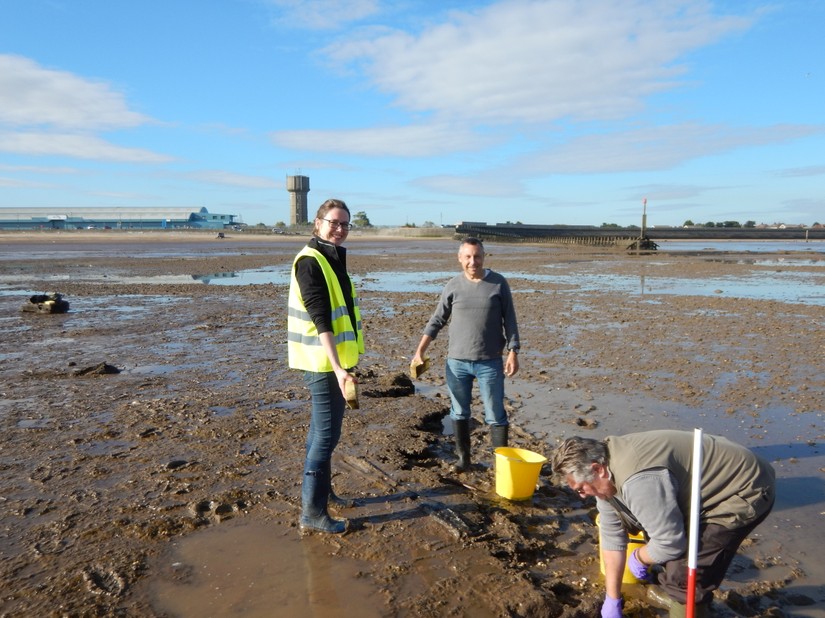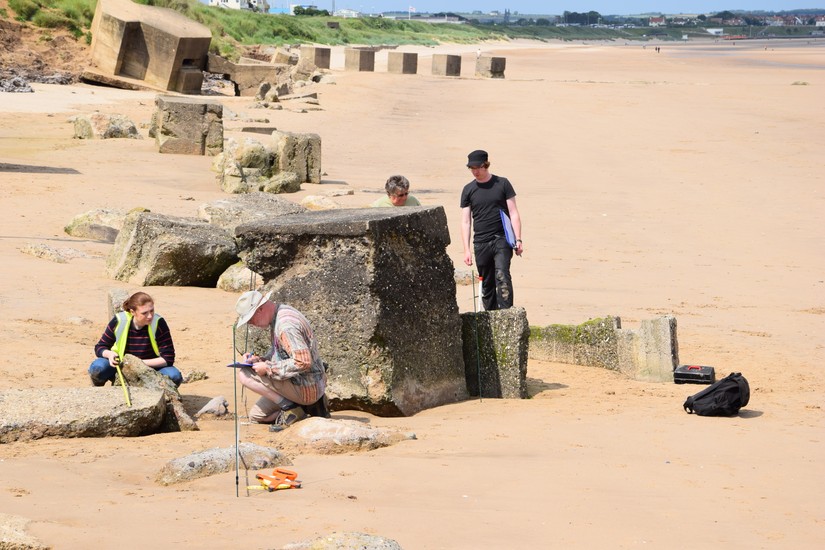Getting into intertidal archaeology
02/08/2016 | John Matthews (CITiZAN Volunteer)
I first came across CITiZAN ten months ago after an absence of two years out of archaeology; so firstly I must thank Andy, Megan and also Stephanie. Here's us at that time, meeting them on north beach at Cleethorpes, where we were cleaning the remains of a possible Bronze Age trackway.

But for me it has to be the east coast of Yorkshire which is most interesting, I never knew World War One and Two bunkers (or pillboxes) could be so fascinating. When you actually get into them; not just the purpose of the bunkers, but also how they were made, the materials used to make them and how to tell a World War One bunker from a World War Two bunker. I learnt all about First and Second World War bunkers on a fun, sunny day in June when Megan and Andy were accompanied by Chris Kolonko. Chris works for the Home Front Legacy Project and is an expert in World War One and Two defences. We spent the day walking along the beach looking at the all the different types of bunkers, search lights and anti-tank blocks and recording a mostly destroyed bunker identified by an earlier survey.


I now seem to spend all my spare time on the Yorkshire coast looking at and photographing anything that could be of interest, from any era. The first feature I recorded for CITiZAN was a World War Two barrage balloon site and its associated bunkers, which I came across situated between North Landing and the Flamborough Head lighthouse.

So far my travels have taken me as far up the Yorkshire coast as Cayton Bay, where the Bunkers are well worth a look.

I've found medieval and Roman pottery as well as Roman plaster on the foreshore as well as worked flint. All nice finds which I've given to Andy to record with the Portable Antiquities Schemes.
I must say, for me though my all-time favourite place on the east coast of Yorkshire has to be Filey Brigg. I heard about the Brigg at the CITiZAN conference in Bridlington, were Chris Robinson talked about his project to record a possible Roman harbour there. To me this is a place of mystery. Trying to find the Roman pier and the pool that an Emperor might have bathed in. I found graffiti carved into the rock of Filey Brigg last week, although I’m still trying to make out what it says. I’m also looking for remains of the whistling buoy installed in 1938.
Andy has put most of my material up on the interactive map now, so you can see them for yourself.
John Matthews CITiZAN surveyor








